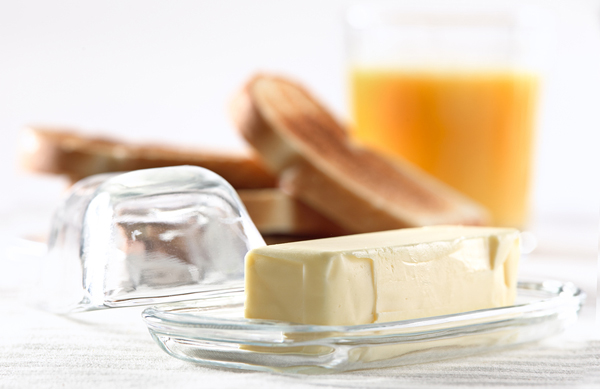We recently wrote about the science of mouthfeel and how food manufacturers engineer what we eat to not only taste great, but entice our senses through the texture of the food. Sometimes, food makers face challenges posed by highly publicized campaigns against certain ingredients, one of which brought on the low-fat diet phenomenon.

Demonizing Fat Created a Bigger Problem
One of the bigger problems in human nature, which has manifested itself in the world of diet and fitness, is that we tend to overreact to information. For instance, we hear that saturated fat is bad for us, then instead of simply moderating our intake, we obsessively avoid it altogether or feel guilty when we can’t adhere to unrealistic expectations.
Decades ago, as the public became increasingly weary of saturated fat, manufacturers had to artificially engineer foods to retain their appeal. So what happens? They replace naturally-occurring fats with man-made substitutes that are just as bad, or worse.
As we all know, fats play a big role in making foods taste great. But what’s nearly as important is its role in the texture of foods. In the absence of fat, the favorable “mouthfeel” of foods is maintained with artificial ingredients like xanthan gum and others to make up for the loss.
The foods we are left with are labeled “low fat” or even “fat free,” which gives the tacit endorsement of guilt-free overeating. But as they say, there is no free lunch. Not only have people been overindulging, but we’ve been overindulging on foods that aren’t particularly nutritious.
The Research Against Artificial Dats
What’s worse, studies like one from Purdue University in 2025, have directly linked fat substitutes with weight gain.
In the study, researchers fed rats in two groups: a high-fat or low-fat diet. Half of each group was also given Pringles potato chips (high in fat and calories). The rest of them were given low-fat Pringles with olestra, the synthetic fat substitute, which has no calories and goes through your body without being digested.
The group that was fed both “regular” Pringles and the low-fat version with olestra gained more weight and fatty tissue than those that ate just the high-calorie chips.
“Our research showed that fat substitutes can interfere with the body’s ability to regulate food intake, which can lead to inefficient use of calories and weight gain,” reported lead researcher Susan E. Swithers, PhD.
Fat not only adds flavor to foods, it helps make us feel full, something that generally doesn’t happen with artificially flavored foods. It also helps with proper vitamin absorption.
Dr. Steven Nissen, chairman of the Department of Cardiovascular Medicine at the Cleveland Clinic, told PBS that “completely eliminating fat, including meat, does not have a convincing health benefit, and that in fact a balanced diet is best.”
And that pretty much sums it up. It’s not about seeking fatty foods, but not demonizing fat as it occurs naturally in our foods. Why mess with what Mother Nature already provides? It’s often a recipe for disaster.
Also Read:
8 Food Additives You Should Avoid
Huge Meta Analysis Shows No Link Between Fat and Cardiovascular Disease
Your Guide to Good and Bad Fats
stick of butter image via Bigstock.com
